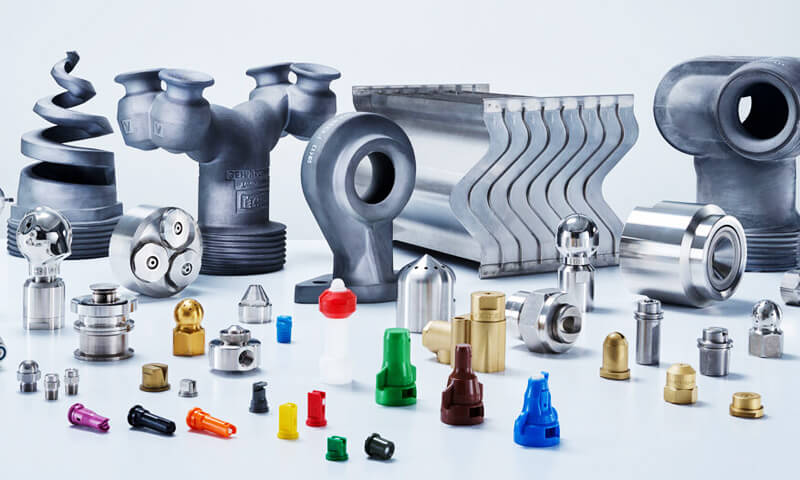1. Introduksjon
Nozzles play a vital role in various applications, from everyday uses like garden sprinklers to complex industrial processes such as jet propulsion and chemical spraying.
These essential components help control the flow, hastighet, and distribution of fluids and gases, ensuring efficiency and precision in numerous fields.
With advancements in technology and materials, nozzles have become more specialized, catering to diverse industrial needs.
I denne bloggen, we’ll dive into what nozzles are, explore their types and applications, and provide insights into their working principles and material selection.
2. What is a Nozzle?
A nozzle is a mechanical device designed to control the direction, fart, and flow of fluids or gases as they exit a system.
By converting pressure energy into velocity, nozzles enable targeted and efficient fluid delivery, whether for irrigation, propulsion, or cleaning.
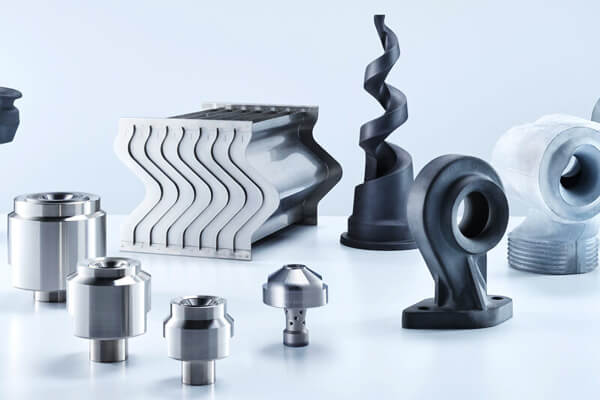
Funksjonalitet:
- Flow Regulation: Nozzles help control the rate and distribution of fluid or gas flow.
- Velocity Enhancement: By narrowing the outlet, nozzles increase the speed of the exiting fluid, optimizing performance in applications like jet engines and fuel injectors.
- Spray Pattern Creation: They shape the fluid flow into specific patterns, enabling precision in applications such as coating or agricultural spraying.
Betydning:
The importance of nozzles cannot be overstated. They ensure processes such as spraying, kjøling, rengjøring,
and combustion operates efficiently and accurately, reducing waste and enhancing performance.
3. Common Types of Nozzles
Nozzles come in a wide variety of designs, each tailored to specific applications and performance requirements.
Understanding the different types can help you choose the most suitable nozzle for your needs.
Under, we delve into some of the most common types of nozzles, exploring their unique characteristics and applications.
Spray Nozzles
Spray nozzles are ubiquitous in industries that require precise fluid distribution over surfaces.
They are used extensively in agriculture, rengjøring, kjølesystemer, Og mer.
The key to spray nozzles lies in their ability to create various spray patterns suited to different tasks.
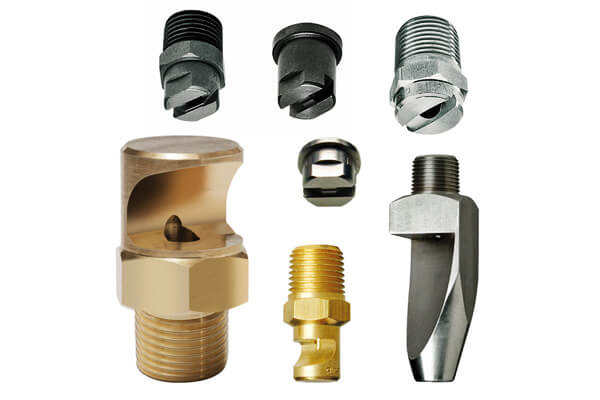
- Flat Fan Nozzles: These nozzles produce a wide, flat spray pattern that is ideal for covering large areas uniformly.
Commonly used in agricultural spraying and industrial cleaning, they can achieve up to 90% coverage efficiency.
For eksempel, in pesticide application, flat fan nozzles reduce drift by up to 50%, ensuring that chemicals reach only the intended targets.
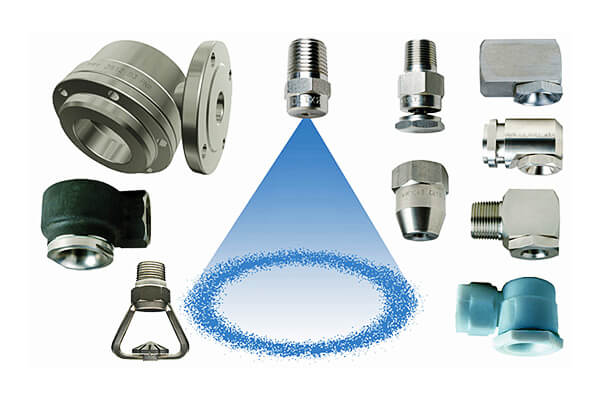
- Hollow Cone Nozzles: Hollow cone nozzles generate a circular spray pattern with a hollow center.
This design is perfect for thorough rinsing and washing applications, as it maximizes surface contact while minimizing water usage.
In industrial settings, these nozzles ensure efficient cleaning with reduced resource consumption.
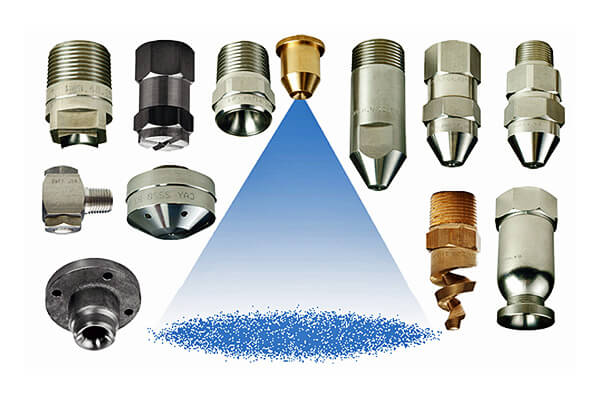
- Full kjegle dyser: Delivering a solid, cone-shaped spray, full cone nozzles provide even wetting and coating over large areas.
They are widely used in irrigation systems, where they offer uniform water distribution, enhancing crop growth and reducing water waste.
Studies show that properly calibrated full-cone nozzles can improve irrigation efficiency by up to 20%.
Gas Nozzles
Gas nozzles play a critical role in processes involving combustion, sveising, og kutting. Their design ensures precise control over gas flow, which is essential for achieving optimal results.
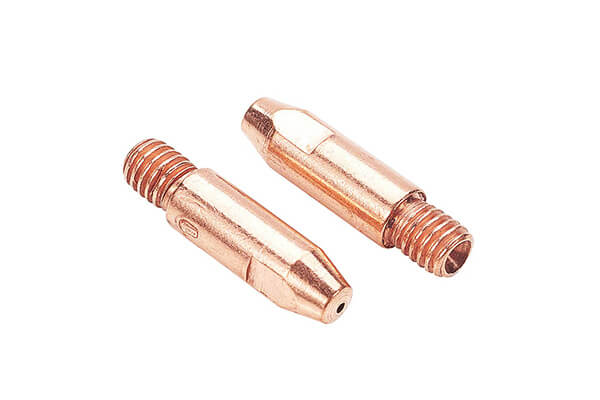
- TIG Welding Nozzles: Used in Tungsten Inert Gas (Tig) sveising, these nozzles provide a focused stream of shielding gas around the weld area.
They can withstand temperatures up to 1,600°C, ensuring durability and consistent weld quality.
TIG welding nozzles contribute significantly to the precision and strength of welds, making them indispensable in manufacturing high-quality metal structures.

- Burner Nozzles: Essential for combustion processes, burner nozzles ensure proper mixing of fuel and air for efficient combustion.
Achieving combustion efficiencies of up to 98%, these nozzles are crucial in reducing emissions and improving energy efficiency.
They are commonly found in industrial furnaces and boilers, where they play a vital role in maintaining safe and effective operation.
Jet Nozzles
Jet nozzles are designed to direct high-speed jets of fluid or gas, often used in propulsion systems like aircraft and rockets.
Their primary function is to generate thrust or enhance mixing.

- Rocket Propulsion Systems: Jet nozzles in rocket engines can achieve exhaust velocities exceeding 4,000 meters per second.
This high velocity is critical for generating the necessary thrust to lift heavy payloads into space.
Advanced materials and engineering techniques ensure that these nozzles can handle extreme temperatures and pressures, contributing to the success of space missions.
Injection Nozzles
Injection nozzles are integral components in engines, delivering precise amounts of fuel into combustion chambers.
This precision is crucial for optimizing engine performance and emissions control.
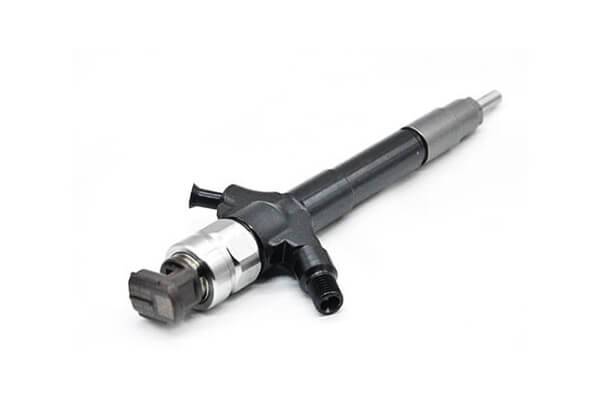
- Diesel Engines: Fuel injection nozzles improve fuel efficiency by up to 20%, leading to significant reductions in emissions.
By injecting fuel at high pressure, these nozzles ensure complete combustion, enhancing engine power and reliability.
Modern diesel engines rely on advanced injection nozzles to meet stringent environmental regulations.
Atomisering av dyser
Atomizing nozzles break liquids into fine mist sprays, making them ideal for applications requiring uniform droplet distribution.
They are commonly used in painting, humidification, and pesticide applications.

- Automotive Painting: Atomizing nozzles can reduce paint overspray by up to 30%, saving materials and improving finish quality.
The fine mist produced ensures even coating, resulting in a smoother and more durable paint job. - Humidification Systems: In environments where controlled humidity is essential, atomizing nozzles deliver a fine mist that quickly evaporates, adding moisture to the air without leaving droplets.
This method can increase relative humidity levels efficiently, benefiting industries such as textiles and electronics.
Tilpassede dyser
Custom nozzles are tailor-made for specific industrial needs or unique applications.
They address challenges that standard designs cannot accommodate, offering solutions for specialized processes.
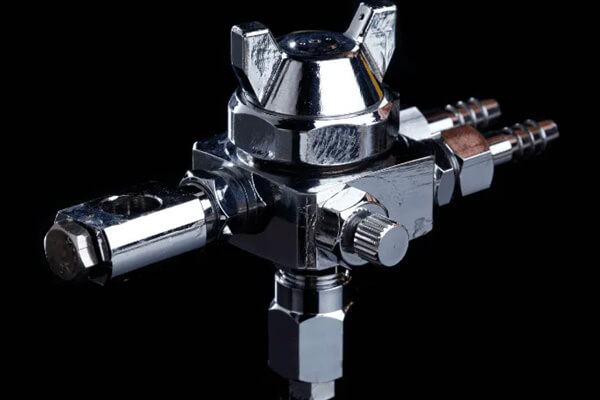
- Applikasjoner med høy temperatur: For industries requiring extreme temperature resistance,
custom nozzles made from materials like ceramics or specialized alloys can endure conditions that would damage conventional nozzles. - Etsende miljøer: When dealing with corrosive substances, custom nozzles constructed from chemically resistant materials
like Teflon or Hastelloy ensure long-lasting performance and reliability.
4. Materials Used in Nozzle Manufacturing
The choice of material for nozzle manufacturing is critical, as it directly impacts the performance, varighet, and cost-effectiveness of the nozzle.
Different materials offer unique properties that make them suitable for specific applications.
Under, we explore the most common materials used in nozzle manufacturing, highlighting their advantages and typical uses.
Metaller
Metals are favored for their strength, varighet, and resistance to high temperatures, making them ideal for harsh environments and demanding applications.
- Rustfritt stål: Known for its excellent corrosion resistance and ability to withstand high temperatures (up to 870°C),
stainless steel nozzles are widely used in industries like food processing, legemidler, and chemical handling.
They also offer superior mechanical strength, ensuring long-lasting performance even under abrasive conditions. - Messing: Brass nozzles combine durability with good thermal conductivity, making them suitable for applications requiring moderate heat resistance.
Commonly found in plumbing and irrigation systems, brass nozzles resist corrosion from water and can operate effectively in a range of environmental conditions. - Aluminium: Lett og korrosjonsbestandig, aluminum nozzles are popular in the aerospace and automotive industries.
Their low density reduces overall system weight without compromising on performance.
Aluminum can withstand temperatures up to 250°C, making it suitable for applications where weight savings are crucial.
Plast
Plastics offer cost-effective solutions with excellent chemical resistance, making them ideal for corrosive or sensitive environments.
- Polypropylen (Pp): Polypropylene nozzles excel in resisting acids, baser, og løsningsmidler, making them indispensable in chemical processing and wastewater treatment.
PP nozzles can operate continuously at temperatures up to 130°C, offering reliable performance in aggressive chemical environments. - Teflon (Ptfe): Teflon nozzles provide exceptional non-stick and low-friction properties, which are beneficial in food processing, legemidler, and electronics manufacturing.
They can withstand temperatures ranging from -269°C to 260°C, making them versatile across a wide temperature spectrum.
Keramikk
Ceramic nozzles stand out for their ability to endure extremely high temperatures and resist wear, making them perfect for specialized industrial processes.
- Alumina Ceramic: Alumina ceramic nozzles can withstand temperatures up to 1,700°C, maintaining structural integrity under extreme heat.
They are commonly used in plasma cutting, sveising, and other high-temperature applications where conventional materials would fail. - Silicon Carbide (Sic): Silicon carbide nozzles offer outstanding hardness and thermal stability, capable of operating at temperatures exceeding 1,600°C.
SiC nozzles are ideal for abrasive blasting and high-wear applications, providing long service life and minimal maintenance.
Kompositter
Composite materials blend the best properties of different components, offering lightweight, corrosion-resistant options tailored for specialized industries.
- Carbon Fiber Composites: These composites reduce weight by up to 50% compared to traditional metals while maintaining high strength and durability.
Carbon fiber nozzles are extensively used in aerospace applications, where reducing weight enhances fuel efficiency and performance. - Glass-Reinforced Epoxy (GRE): GRE nozzles combine excellent chemical resistance with mechanical strength, making them suitable for oil and gas extraction, Kjemisk prosessering, og marine applikasjoner.
They can withstand harsh chemicals and elevated temperatures, providing reliable performance in challenging environments.
Summary Table of Material Properties
| Materiale | Temperaturområde (° C.) | Nøkkelegenskaper | Typiske applikasjoner |
|---|---|---|---|
| Rustfritt stål | Opp til 870 | Korrosjonsbestandig, varig | Matbehandling, legemidler |
| Messing | Moderat | Thermal conductive, varig | Rørleggerarbeid, irrigasjon |
| Aluminium | Opp til 250 | Lett, Korrosjonsbestandig | Luftfart, bil |
| Polypropylen | Opp til 130 | Chemically resistant | Kjemisk prosessering, Avløpsvannbehandling |
| Teflon (Ptfe) | -269 til 260 | Non-stick, low-friction | Matbehandling, Elektronikk |
| Alumina Ceramic | Opp til 1,700 | Høytemperaturresistens, slitasje | Plasma cutting, sveising |
| Silicon Carbide | Exceeding 1,600 | Hardhet, Termisk stabilitet | Slitende sprengning, applikasjoner med høyt slitasje |
| Carbon Fiber Composites | Variabel | Lett, sterk | Luftfart |
| Glass-Reinforced Epoxy | Variabel | Chemically resistant, mechanically strong | Oil and gas, Kjemisk prosessering |
5. How Nozzles Work
Understanding the principles behind how nozzles function is crucial for optimizing their performance in various applications.
Nozzles are designed to control and direct the flow of fluids or gases, converting pressure energy into kinetic energy to achieve specific outcomes
such as increasing velocity, shaping spray patterns, or controlling distribution.
Under, we explore the fundamental mechanisms that govern nozzle operation, including fluid dynamics, flytkontroll, and spray pattern generation.
Operasjonsprinsipp
Fluid Dynamics and Energy Conversion
Nozzles operate on the principle of fluid dynamics, specifically utilizing Bernoulli’s principle,
which states that an increase in the speed of a fluid occurs simultaneously with a decrease in pressure or a decrease in the fluid’s potential energy.
As the cross-sectional area of the nozzle decreases (constricts), the velocity of the fluid increases, leading to a more forceful output.
This conversion from pressure energy to kinetic energy is what enables nozzles to accelerate fluids or gases to high speeds.
- Bernoulli’s Equation: P+12rv2+rgh=constenntP+21rv2+rgh=constant
-
- Hvor PP is pressure, rr is fluid density, vv is velocity, gg is gravitational acceleration, og hh is height.
- This equation illustrates how changes in pressure and velocity are interrelated within a nozzle.
Contraction and Expansion Zones
Most nozzles feature both contraction and expansion zones:
- Contraction Zone: The initial section where the diameter narrows, accelerating the fluid and reducing pressure.
- Expansion Zone: Following the narrowest point (throat), this section may allow the fluid to expand again, depending on the nozzle design and application requirements.
Flytkontroll
Laminar vs. Turbulent strømning
The type of flow through a nozzle can be either laminar or turbulent, each serving different purposes:
- Laminar Flow: Characterized by smooth, parallel layers of fluid moving at different velocities.
Laminar flow is predictable and minimizes turbulence, making it suitable for applications requiring precise control, such as fuel injection systems. - Turbulent strømning: Involves chaotic, mixed motion of fluid particles, enhancing mixing and heat transfer.
Turbulent flow is beneficial in applications like combustion or cooling, where thorough mixing is essential.
Flow Rate and Pressure Regulation
Nozzles can regulate the flow rate and pressure of the fluid or gas passing through them.
By adjusting the nozzle’s internal geometry, størrelse, or shape, engineers can fine-tune these parameters to match application-specific needs.
For eksempel, a smaller nozzle opening will result in higher exit velocity but a lower flow rate, while a larger opening will produce the opposite effect.
Spray Patterns and Distribution
Spray Pattern Generation
The design of a nozzle significantly influences the resulting spray pattern, which can be customized for specific applications.
Common spray patterns include:
- Flat Fan Spray: Produced by flat fan nozzles, this pattern delivers a wide, even spray ideal for covering large surfaces quickly and efficiently.
- Hollow Cone Spray: Generated by hollow cone nozzles, this pattern creates a circular spray with a hollow center, perfect for washing and rinsing applications.
- Full Cone Spray: Delivered by full cone nozzles, this pattern provides a solid, cone-shaped spray that ensures uniform wetting and coating over large areas.
Factors Affecting Spray Distribution
Several factors influence the quality and effectiveness of spray distribution:
- Intern geometri: The internal contours of the nozzle affect how fluid flows and exits, impacting spray pattern and droplet size.
- External Factors: Variables such as pressure, viskositet, and ambient conditions (F.eks., temperatur, fuktighet) also play critical roles in determining the final spray characteristics.
6. Key Benefits of Using Nozzles
Nozzles play a crucial role in various industrial, kommersiell, and residential applications due to their ability to control, direct, and manipulate fluid or gas flow.
Here are some key benefits of using nozzles:
Precision in Fluid Delivery:
- Accurate Flow Control: Nozzles can be designed to deliver a precise amount of fluid or gas at a specific rate, ensuring consistency in processes like spraying, dosering, or injection.
- Targeted Application: They allow for the precise targeting of fluids or gases, minimizing waste and ensuring that the fluid reaches the intended area or surface.
Enhanced Efficiency:
- Increased Velocity: By reducing the cross-sectional area through which the fluid flows,
nozzles can increase the velocity of the fluid, making processes like cutting, rengjøring, or propulsion more efficient. - Reduced Material Use: Nozzles designed for spraying can distribute fluids more evenly and with less waste,
reducing the amount of material needed for tasks like painting, belegg, or agricultural spraying.
Improved Process Control:
- Flow Regulation: Nozzles provide a means to regulate flow rates, allowing for better control over processes,
which is crucial in industries like pharmaceuticals, matbehandling, and chemical manufacturing. - Pressure Management: They help manage the pressure of the fluid or gas, which is vital in applications where pressure can affect the outcome,
such as in fire suppression systems or hydraulic systems.
Allsidighet:
- Bredt spekter av applikasjoner: Nozzles are used in an extensive array of applications from agriculture (spraying),
to manufacturing (kutting), to cleaning, Smøring, and even in aerospace (thrust generation). - Tilpasning: Nozzles can be tailored for specific tasks, with different designs for different spray patterns, strømningshastigheter, and droplet sizes, allowing for flexibility in operation.
Energy Conservation:
- Minimized Energy Use: By optimizing fluid flow and reducing unnecessary pressure drops, nozzles can help conserve energy,
particularly in systems where pumping or compressing fluids is required.
Sikkerhet:
- Controlled Dispersion: Nozzles can control the dispersion of potentially hazardous materials, reducing the risk of exposure or environmental contamination.
- Fire Suppression: In fire protection systems, nozzles are used to direct water or other extinguishing agents precisely where needed, enhancing safety.
Environmental Benefits:
- Redusert avfall: Efficient use of materials through precise application means less waste, bidrar til miljømessig bærekraft.
- Dust Suppression: Nozzles can be used to control dust in mining, konstruksjon, og andre bransjer, reducing air pollution.
Aesthetic and Functional Surface Finishing:
- Even Coating: Nozzles ensure an even distribution of paint, belegg, eller kjemikalier, which is important for both aesthetic appeal and functional performance in products.
- Overflateforberedelse: They prepare surfaces for further treatments like painting, bonding, or welding by cleaning, avbør, or creating the necessary texture.
Increased Productivity:
- Faster Operations: By accelerating fluid flow or providing targeted application, nozzles can speed up processes like cleaning, kutting, or applying treatments.
- Automasjon: Nozzles are integral to automated systems, allowing for high-volume, consistent production without human intervention.
Holdbarhet og lang levetid:
- Materiell valg: Nozzles can be made from materials resistant to corrosion, slitasje, og høye temperaturer, ensuring long service life in harsh environments.
- Redusert slitasje: Proper nozzle design can minimize wear on system components by controlling fluid flow to reduce cavitation or erosion.
Economic Benefits:
- Kostnadseffektivitet: While nozzles themselves might add to initial costs, their ability to reduce material usage,
energy consumption and labor can lead to significant cost savings over time. - Skalerbarhet: Nozzle systems can be scaled up or down to match production needs, offering economic flexibility.
Enhanced Mixing and Atomization:
- Blanding: Nozzles can facilitate the mixing of fluids or gases, which is beneficial in processes requiring chemical reactions or blending.
- Atomization: For applications like spray drying or combustion, nozzles break down liquids into fine droplets, enhancing evaporation rates or combustion efficiency.
7. Applications of Nozzles
Nozzles are ubiquitous in both industrial and everyday settings due to their ability to control, direct, and manipulate the flow of fluids or gases.
Here are some of the key applications where nozzles are commonly used:
Jordbruk:
- Spraying: Nozzles are used for applying pesticides, herbicides, Gjødsel, and fungicides with precision to crops, minimizing waste and ensuring even distribution.
Automotive and Aerospace:
- Fuel Injection: In internal combustion engines, nozzles inject fuel into the combustion chamber at high pressure for efficient burning.
- Thrust Generation: Rocket engines and jet engines use convergent-divergent nozzles to accelerate exhaust gases, generating thrust for propulsion.
Manufacturing and Industry:
- Rengjøring: High-pressure nozzles are employed in industrial cleaning processes for removing dirt, fett, rust, and other contaminants from surfaces.
- Kutting: Water jet cutting uses high-pressure nozzles to cut through materials like metal, stein, glass, and composites with precision.
- Welding and Flame Cutting: Gas nozzles are used to direct oxygen and fuel gases for cutting or welding operations.
- Smøring: Nozzles deliver lubricants to machinery parts with precision, redusere friksjon og slitasje.
Fire Protection:
- Fire Suppression: Fire hoses and sprinkler systems use nozzles to direct water or fire-retardant chemicals onto fires, controlling or extinguishing them.
Kjemisk prosessering:
- Reactor Feeding: Nozzles are used to introduce reactants into chemical reactors with controlled flow rates.
- Spray Drying: In spray drying processes, nozzles atomize liquids into fine droplets to dry them into powders.
Food and Beverage:
- Beverage Dispensing: Nozzles are used in beverage dispensers to control the flow and carbonation of drinks.
- Matbehandling: For cleaning, sterilisering, and application of coatings or flavorings on food products.
Pharmaceutical and Medical:
- Drug Delivery: Nozzles in inhalers, nebulizers, and injectors deliver medication in precise doses.
- Sterilization: Nozzles are used in autoclaves and sterilization equipment to distribute steam or gases evenly.
HVAC (Oppvarming, Ventilasjon, og klimaanlegg):
- Humidification: Nozzles are employed to introduce moisture into the air for humidification purposes.
- Kjøling: They are used in cooling towers to distribute water for evaporative cooling.
Dust and Odor Control:
- Dust Suppression: In mining, konstruksjon, og andre bransjer, nozzles spray water or dust suppressants to control airborne dust.
- Odor Neutralization: Nozzles can be used to distribute odor-neutralizing agents in industrial settings.
Overflatebehandling og belegg:
- Maleri: Nozzles in spray guns deliver paint evenly onto surfaces for a smooth finish.
- Belegg: Used in the application of protective or decorative coatings on various materials.
Vannbehandling:
- Aeration: Nozzles introduce air into water to enhance the oxygenation process in water treatment plants.
- Chemical Injection: They are used to inject chemicals for water purification or treatment.
Textile Industry:
- Dyeing and Printing: Nozzles are used to apply dyes and chemicals evenly onto fabrics.
Olje og gass:
- Well, Kontroll: Nozzle assemblies in blowout preventers help control well pressure during drilling operations.
- Spray Nozzles: Used for cleaning, descaling, and lubrication in refineries and oil processing plants.
Agriculture and Horticulture:
- Irrigation: Nozzles in drip irrigation systems deliver water directly to the root zone of plants.
- Greenhouse Climate Control: For misting, humidification, and cooling in controlled environments.
Environmental Applications:
- Dust Suppression: In open environments like construction sites or quarries to reduce dust pollution.
- Fumigation: For pest control in agriculture and storage facilities.
Entertainment:
- Special Effects: Nozzles are used in stage productions, films, and theme parks to create fog, mist, or simulate rain or fire effects.
Hydraulic Systems:
- Flytkontroll: Nozzles in hydraulic systems control the flow of hydraulic fluid, affecting the force and speed of actuators.
Konstruksjon:
- Concrete Spraying: Nozzles are used in shotcrete applications to spray concrete for construction and repair.
8. Factors to Consider When Choosing a Nozzle
Hensikt
Understanding the application-specific requirements—such as flow rate, trykk, and desired spray pattern—is crucial for selecting the right nozzle.
Materialkompatibilitet
Ensure the nozzle material resists wear, varme, og kjemisk eksponering, Spesielt i aggressive miljøer.
Størrelse og form
The size and shape of the nozzle influence its flow characteristics and overall performance, so choose wisely based on the intended use.
Vedlikeholdsbehov
Durability and ease of cleaning or replacement should factor into the decision, impacting long-term maintenance costs.
9. Nozzles vs. Other Fluid Control Devices
Fluid control devices are essential in various industries for managing the flow, direction, trykk, and distribution of fluids.
Here’s a comparison between nozzles and other common fluid control devices:
Dyser:
- Funksjon: Nozzles are designed to control the flow, direction, hastighet, form, and distribution of a fluid or gas stream.
They accelerate or atomize the fluid through changes in cross-sectional area or by introducing external forces like air. - Applikasjoner: Used in spraying, kutting, rengjøring, propulsion, and many other applications where precise fluid delivery is required.
- Fordeler:
-
- Precision in fluid delivery.
- Ability to increase fluid velocity or atomize liquids.
- Customizable spray patterns and flow rates.
- Can handle a wide range of fluid viscosities and pressures.
- Ulemper:
-
- Can be prone to clogging if not maintained properly.
- Limited in terms of flow control once installed (unless adjustable).
Ventiler:
- Funksjon: Ventiler control the flow of fluids by opening, closing, or partially obstructing various passageways. They can regulate flow, trykk, and direction.
- Typer:
-
- Kuleventiler: Provide on/off control, and quarter-turn operation.
- Portventiler: Used for full open or closed service, ikke for gasspeditling.
- Klodeventiler: Used for flow regulation and throttling.
- Kontroller ventiler: Forhindre tilbakestrømning.
- Sommerfuglventiler: Used for quick shutoff and flow control.
- Fordeler:
-
- Can completely stop, start, or regulate flow.
- Versatile in terms of pressure and flow control.
- Can be automated or manually operated.
- Ulemper:
-
- May cause pressure drops due to flow restrictions.
- More complex design compared to nozzles, potentially leading to maintenance issues.
- Generally not designed for atomization or velocity increase.
Pumper
- Funksjonalitet:
-
- Transfer or circulate fluids by increasing their pressure or moving them to a higher elevation.
- Generate flow rather than control it.
- Viktige funksjoner:
-
- Mechanized devices with internal components like impellers or pistons.
- Powered by electric motors, motorer, or manual operation.
- Applikasjoner:
-
- Common in water supply systems, Kjemisk prosessering, and fuel transfer.
- Crucial for applications requiring fluid movement across distances or heights.
- Styrker:
-
- Capable of handling large fluid volumes and maintaining flow in closed systems.
- Ideal for high-pressure, operasjoner med høyt volum.
- Differences from Nozzles:
-
- Pumps drive fluid flow through a system, whereas nozzles refine and direct the flow as it exits.
- Pumps create pressure; nozzles convert it into velocity or a specific pattern.
Orifices:
- Funksjon: An orifice is a simple opening or hole that restricts flow to control fluid velocity or pressure.
- Applikasjoner: Flow measurement, trykkregulering, and flow restriction.
- Fordeler:
-
- Simple and inexpensive.
- Can be used to measure flow rates with appropriate instrumentation.
- Reduces flow without complex mechanisms.
- Ulemper:
-
- Limited control over flow direction or pattern.
- Can cause significant pressure drop.
- Not suitable for atomization or creating specific spray patterns.
Flow Meters:
- Funksjon: Measure the flow rate of fluids or gases without significantly altering the flow path.
- Typer:
-
- Differential Pressure Meters (F.eks., Venturi, Orifice Plate).
- Positive Displacement Meters.
- Velocity Flow Meters (F.eks., Turbine, Ultralyd).
- Fordeler:
-
- Accurate flow measurement.
- Can be non-intrusive, not affecting the flow significantly.
- Useful for process control and monitoring.
- Ulemper:
-
- Does not control or direct flow; only measures it.
- Can have limitations in high-viscosity or corrosive environments.
Diffusers:
- Funksjon: Increase the pressure or decrease the velocity of a fluid by expanding the flow area.
- Applikasjoner: Used in HVAC systems, in pumps to reduce cavitation, and in fluid transport systems to control flow.
- Fordeler:
-
- Reduces velocity while increasing pressure.
- Can help in reducing noise and cavitation in fluid systems.
- Ulemper:
-
- Not designed for precise flow control or atomization.
- Increases system complexity due to the need for a divergent section.
Flow Restrictors:
- Funksjon: Limit the flow rate of a fluid by restricting the flow path.
- Applikasjoner: Used in drip irrigation systems, in medical devices for flow control, and in fuel systems to regulate flow.
- Fordeler:
-
- Simple and effective for controlling flow rates.
- Can be used to maintain a constant flow rate.
- Ulemper:
-
- Limited in terms of adjustability once installed.
- Can cause significant pressure drops.
Sprayers:
- Funksjon: Similar to nozzles but often include mechanisms for atomization or dispersion of fluids over a wide area.
- Applikasjoner: Jordbruk, maleri, rengjøring, and other applications where wide coverage is needed.
- Fordeler:
-
- Designed for even distribution over a large area.
- Often includes features like adjustable spray patterns or droplet sizes.
- Ulemper:
-
- Less precise than some nozzles for targeted fluid delivery.
- Can be more complex and require more maintenance.
10. Konklusjon
Oppsummert, nozzles are vital components that significantly improve efficiency and precision across numerous industries.
From agriculture to industry, their versatility and adaptability make them indispensable tools.
For those looking to enhance their operations, consulting professionals or manufacturers,
slik som DETTE) can provide valuable guidance in choosing the most suitable nozzle for any given application.

